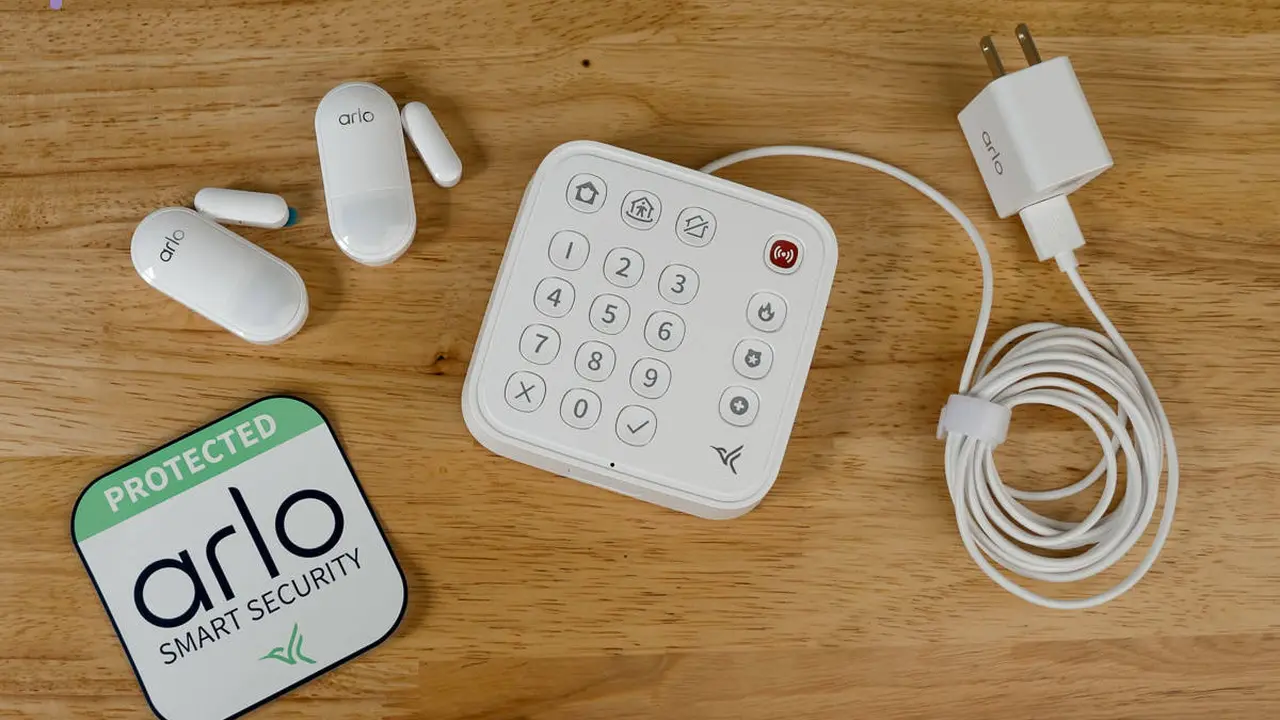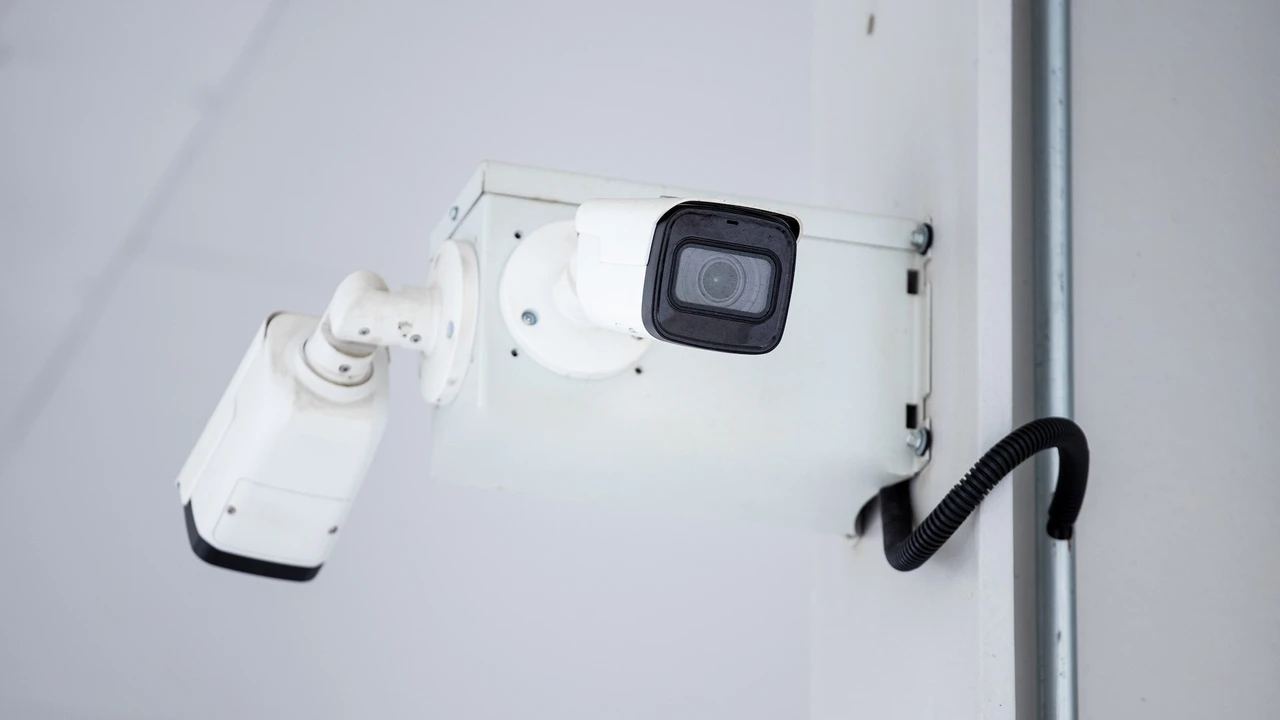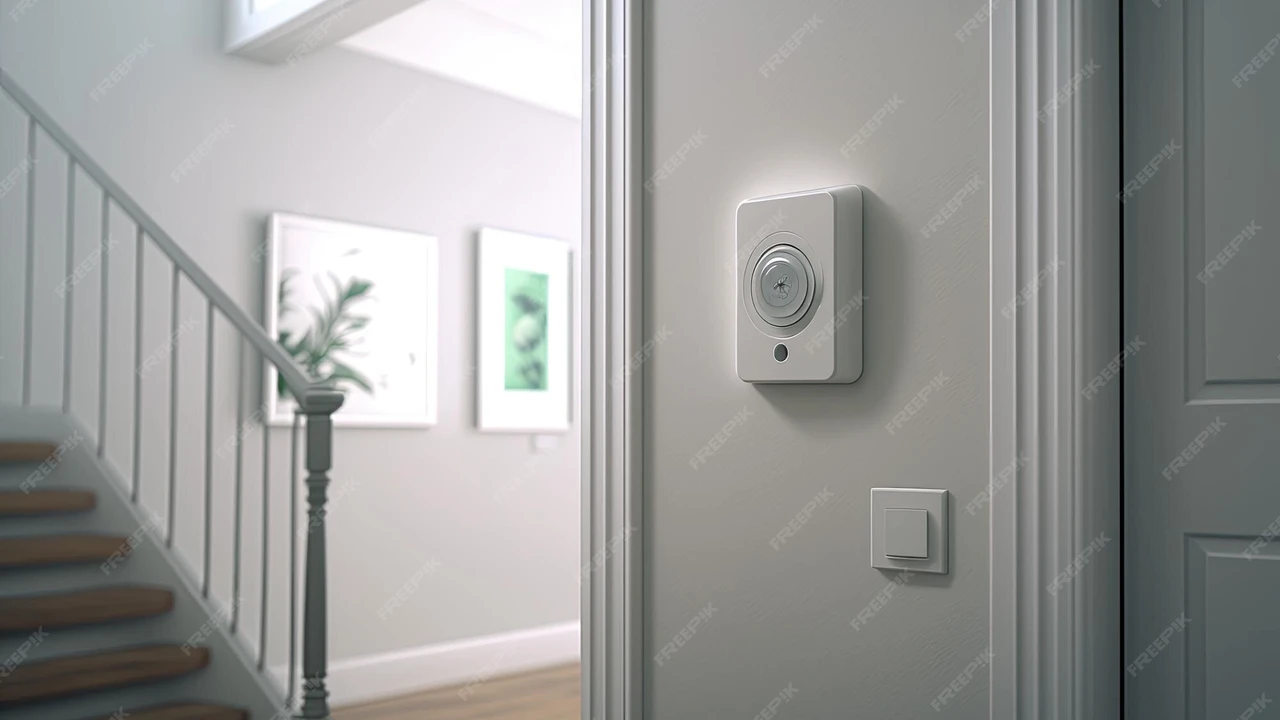Comparing Smart Home Security Systems Ring vs Arlo
A detailed comparison of Ring and Arlo smart home security systems to help you choose the best option for your home.

Comparing Smart Home Security Systems Ring vs Arlo
Hey there, looking to beef up your home security? You've probably heard of Ring and Arlo – they're two of the biggest names in the smart home security game. But when it comes down to it, which one is actually better for your specific needs? It's not a simple answer, as both offer fantastic features but cater to slightly different priorities. Let's dive deep into Ring vs. Arlo, breaking down everything from cameras and monitoring to pricing and ease of use, so you can make an informed decision for your peace of mind.
Ring vs Arlo An Overview of Home Security Giants
Before we get into the nitty-gritty, let's get a general feel for what each brand brings to the table. Ring, famously acquired by Amazon, is well-known for its video doorbells and a comprehensive ecosystem that includes security cameras, alarm systems, and smart lighting. Their focus is often on affordability, ease of installation, and a strong community aspect with features like Neighbors app. Arlo, on the other hand, has built its reputation on high-quality, wire-free cameras with advanced features like 4K resolution and superior image processing. They tend to be a bit more premium, offering cutting-edge technology for those who prioritize top-tier video surveillance.
Camera Capabilities and Video Quality Ring vs Arlo
When it comes to smart home security, cameras are often the star of the show. This is where you'll see some significant differences between Ring and Arlo.
Ring Camera Offerings and Features
Ring offers a wide array of cameras, from their iconic video doorbells to floodlight cameras and indoor cams. Most Ring cameras record in 1080p HD, which is perfectly adequate for most home security needs. They generally feature:
- Two-Way Talk: Communicate with visitors or deter intruders.
- Motion Detection: Customizable zones and alerts.
- Night Vision: Infrared night vision for clear footage in the dark.
- Live View: Check in on your property anytime.
- Integrated Lighting: Many outdoor cameras, like the Ring Floodlight Cam, include powerful LED lights.
Popular Ring Camera Products:
- Ring Video Doorbell 4: A great all-rounder with 1080p HD video, color night vision, and quick-release battery. Ideal for front door monitoring. Price: Around $199.99
- Ring Floodlight Cam Wired Pro: Top-tier outdoor security with 1080p HD, 3D Motion Detection, Bird's Eye View, and powerful floodlights. Excellent for driveways and backyards. Price: Around $249.99
- Ring Stick Up Cam Battery: Versatile indoor/outdoor camera with 1080p HD and flexible mounting options. Good for general surveillance. Price: Around $99.99
Arlo Camera Offerings and Features
Arlo prides itself on its superior video quality and advanced features. Many of their cameras offer higher resolutions, including 2K and even 4K, providing incredibly detailed footage. Key Arlo camera features include:
- High Resolution Video: Up to 4K HDR for crystal clear images.
- 160-180 Degree Field of View: Wider coverage means fewer blind spots.
- Color Night Vision: See in color even in low light conditions.
- Integrated Spotlight: Many models include a spotlight for deterrence and color night vision.
- Auto-Zoom and Tracking: Some advanced models can automatically zoom in and follow moving objects.
- Wire-Free Design: Most Arlo cameras are battery-powered, offering incredible flexibility in placement.
Popular Arlo Camera Products:
- Arlo Ultra 2 Spotlight Camera: The flagship model with 4K HDR video, 180-degree view, color night vision, and integrated spotlight. Perfect for those who demand the absolute best in video quality. Price: Around $299.99 (per camera)
- Arlo Pro 4 Spotlight Camera: A fantastic balance of features and price, offering 2K HDR video, 160-degree view, and integrated spotlight. A great all-around choice for most homes. Price: Around $199.99 (per camera)
- Arlo Essential Spotlight Camera: A more budget-friendly option with 1080p HD video, 130-degree view, and integrated spotlight. Good for basic outdoor surveillance. Price: Around $129.99 (per camera)
Video Quality Comparison
If raw video quality is your top priority, Arlo generally takes the lead, especially with its Ultra series offering 4K resolution. This can be crucial for identifying fine details like license plates or facial features from a distance. Ring's 1080p is good, but it won't match the clarity of Arlo's higher-end models. However, for most general surveillance and motion detection, Ring's 1080p is more than sufficient.
Installation and Power Options DIY vs Professional Setup
How easy is it to get these systems up and running? This is a big factor for many homeowners.
Ring Installation and Power
Ring systems are generally designed for DIY installation. Their video doorbells often come with battery options or can be hardwired to existing doorbell wiring. Cameras like the Stick Up Cam are battery-powered, making placement super flexible, or can be plugged in. Floodlight Cams require existing electrical wiring. The Ring Alarm system is also a straightforward DIY setup, with sensors that easily stick to doors and windows.
- DIY Friendly: Most Ring products are designed for easy self-installation.
- Flexible Power: Mix of battery, wired, and solar options.
- No Hub Required: Many Ring devices connect directly to your home Wi-Fi.
Arlo Installation and Power
Arlo also leans heavily into DIY installation, especially with its wire-free cameras. The battery life on Arlo cameras is often impressive, lasting several months on a single charge depending on usage. Some Arlo systems, particularly the higher-end ones like the Ultra, require an Arlo SmartHub to function. This hub provides local storage, extends Wi-Fi range, and enhances battery life. While an extra piece of equipment, it does offer benefits.
- Wire-Free Convenience: Most cameras are battery-powered, offering ultimate placement flexibility.
- Hub Requirement: Higher-end Arlo systems often require a SmartHub.
- DIY Friendly: Easy to mount and set up.
Ease of Installation Comparison
Both systems are generally easy to install for the average homeowner. Ring might have a slight edge in simplicity for individual devices as many don't require a separate hub. However, Arlo's wire-free nature for its premium cameras offers unparalleled flexibility in placement without worrying about power outlets.
Monitoring and Subscription Plans Cloud Storage and Features
This is where the ongoing cost comes in, and it's a crucial aspect to consider. Both Ring and Arlo offer subscription plans that unlock the full potential of their devices.
Ring Protect Plans
Without a Ring Protect plan, you can still get live view and motion-activated alerts, but you won't be able to save or review any video recordings. This significantly limits the usefulness of the cameras. Ring offers several tiers:
- Ring Protect Basic: Covers one device, offers 60 days of video history, and snapshot capture. Price: $3.99/month or $39.99/year.
- Ring Protect Plus: Covers all devices at one location, 60 days of video history, snapshot capture, and extended warranty. This plan is also required for professional monitoring of the Ring Alarm system. Price: $10/month or $100/year.
- Ring Protect Pro: Includes all Plus features, professional monitoring for Ring Alarm, 24/7 backup internet for Ring Alarm, and Alexa Guard Plus. Price: $20/month or $200/year.
Key Takeaway for Ring: A subscription is pretty much essential to get the most out of your Ring cameras, especially for reviewing past events. If you have a Ring Alarm, the Plus or Pro plan is necessary for professional monitoring.
Arlo Secure Plans
Arlo also requires a subscription for cloud video storage and advanced features. Without a plan, you'll only get live view and motion alerts, similar to Ring. Arlo's plans are generally device-specific or cover multiple cameras.
- Arlo Secure Single Camera: 30 days of cloud video history, interactive notifications, advanced object detection (people, vehicles, animals, packages), and emergency response. Price: $4.99/month.
- Arlo Secure Multi-Camera: Covers unlimited cameras at one location, 30 days of cloud video history, interactive notifications, advanced object detection, and emergency response. Price: $12.99/month.
- Arlo Secure Plus: All Secure Multi-Camera features, plus 24/7 professional monitoring and extended warranty. Price: $17.99/month.
Key Takeaway for Arlo: Arlo's advanced object detection and emergency response features are very compelling. The ability to cover unlimited cameras with the multi-camera plan is a great value if you have several Arlo devices. Professional monitoring is available with Secure Plus.
Subscription Plan Comparison
Both brands offer competitive subscription plans. Ring's basic plan is slightly cheaper for a single device, but Arlo's advanced object detection is a significant advantage. If you have multiple cameras, Arlo's multi-camera plan offers unlimited devices for a slightly higher price than Ring's Plus plan, which also covers all devices. For professional monitoring, both are similarly priced, but Ring's Pro plan includes additional features like backup internet for the alarm system.
Smart Home Integration and Ecosystem Compatibility
How well do these systems play with other smart devices in your home?
Ring Smart Home Integration
Being an Amazon company, Ring integrates seamlessly with Amazon Alexa. You can view live feeds on Echo Show devices, arm/disarm your alarm with voice commands, and even have Alexa announce when someone is at your door. Ring also has its own ecosystem of smart lighting (Ring Smart Lighting) and the Ring Alarm system, which includes contact sensors, motion detectors, and a siren. This allows for a very cohesive Ring-centric smart home.
- Amazon Alexa: Deep integration with all Alexa-enabled devices.
- Ring Ecosystem: Works well with Ring Alarm, Ring Smart Lighting.
- Limited Google Assistant/Apple HomeKit: Less robust integration with other platforms.
Arlo Smart Home Integration
Arlo is more platform-agnostic, offering broader compatibility. It works well with Amazon Alexa, Google Assistant, and even Apple HomeKit (for some models). This makes Arlo a good choice if you have a mixed smart home environment or prefer not to be tied to a single ecosystem.
- Amazon Alexa: Good integration.
- Google Assistant: Good integration.
- Apple HomeKit: Supported by some Arlo cameras and the SmartHub.
- IFTTT: Can be integrated with other smart devices via IFTTT.
Smart Home Integration Comparison
If you're all-in on Amazon Alexa, Ring offers a slightly more integrated and streamlined experience within that ecosystem. However, if you value flexibility and compatibility with multiple smart home platforms (especially Google Assistant or Apple HomeKit), Arlo is the clear winner. Arlo's broader compatibility makes it a more versatile choice for diverse smart homes.
Security Features and Advanced Detection Ring vs Arlo
Beyond just recording video, what advanced security features do these systems offer?
Ring Security Features
- Customizable Motion Zones: Define specific areas you want to monitor.
- People Only Mode: Reduces false alerts by focusing on human shapes (with subscription).
- Snapshot Capture: Periodically takes still images between motion events (with subscription).
- 3D Motion Detection and Bird's Eye View (Pro models): Advanced radar-based motion detection for more precise alerts and a top-down view of motion paths.
- Linked Devices: Trigger other Ring devices (like lights or sirens) when motion is detected.
- Ring Alarm System: A full-fledged security system with professional monitoring options.
Arlo Security Features
- Advanced Object Detection: Identifies people, vehicles, animals, and packages (with subscription). This is a huge advantage for reducing irrelevant notifications.
- Activity Zones: Similar to Ring's motion zones.
- Integrated Siren and Spotlight: Many cameras have built-in sirens and spotlights for active deterrence.
- Auto-Zoom and Tracking: Some high-end cameras can automatically zoom in and follow a person.
- Package Detection: Get alerts when a package is delivered or picked up.
- Emergency Response: Directly contact emergency services through the Arlo app (with subscription).
Advanced Features Comparison
Arlo generally offers more sophisticated AI-powered detection features, especially with its advanced object detection (people, vehicles, animals, packages). This can significantly reduce false alarms and provide more meaningful alerts. Ring's 3D Motion Detection and Bird's Eye View on its Pro models are innovative, but Arlo's broader AI capabilities across its subscription plans are very compelling. For active deterrence, both offer sirens and spotlights, but Arlo's integration of these into more camera models is a plus.
Pricing and Value for Money Initial Cost and Long-Term Expenses
Let's talk about the bottom line – how much will these systems cost you, both upfront and over time?
Ring Pricing Structure
Ring often has lower upfront costs for individual cameras and doorbells. Their subscription plans are also generally more affordable, especially the basic plan for a single device. If you're building a comprehensive system with the Ring Alarm, the Protect Plus or Pro plans offer good value by covering all devices and professional monitoring.
- Lower Entry Point: Individual devices often cheaper.
- Affordable Subscriptions: Basic plan is budget-friendly.
- Good Value for Alarm System: Protect Plus/Pro covers all devices and monitoring.
Arlo Pricing Structure
Arlo cameras tend to have a higher upfront cost, especially for their 2K and 4K models. Their subscription plans are slightly more expensive than Ring's basic offerings, but they include more advanced features like object detection. If you need a SmartHub, that's an additional upfront cost. However, the multi-camera plan can be good value if you have many Arlo cameras.
- Higher Upfront Cost: Cameras are generally more expensive.
- Premium Features: Subscriptions offer advanced AI detection.
- SmartHub Cost: An additional expense for some systems.
Value for Money Comparison
If budget is your absolute top priority, Ring often provides a more affordable entry point and lower ongoing subscription costs for basic functionality. However, if you prioritize cutting-edge video quality, advanced AI detection, and wire-free flexibility, Arlo offers excellent value for its premium features, even with the higher price tag. Consider what features are most important to you and how many devices you plan to install.
User Experience and App Interface Navigating Your Security
A security system is only as good as how easy it is to use. Both Ring and Arlo offer intuitive mobile apps.
Ring App Experience
The Ring app is generally user-friendly and well-designed. It provides a unified interface for all your Ring devices, including doorbells, cameras, and the alarm system. Key features include:
- Dashboard: Quick access to live view, event history, and device status.
- Event History: Easily review recorded videos (with subscription).
- Neighbors App: A community-based feature to share and view local crime and safety alerts.
- Device Settings: Simple controls for motion zones, alerts, and privacy settings.
Arlo App Experience
The Arlo app is also highly rated for its ease of use and clean interface. It's designed to manage multiple cameras and provides quick access to live feeds and recorded events. Highlights include:
- Intuitive Layout: Easy to navigate and find what you need.
- Rich Notifications: Interactive notifications with thumbnails of detected events.
- Customizable Modes: Set different modes (e.g., Armed, Disarmed, Schedule) for your cameras.
- Emergency Response Button: Quick access to emergency services.
App Interface Comparison
Both apps are excellent and provide a smooth user experience. Ring's app benefits from integrating the Neighbors feature, which some users find valuable for community awareness. Arlo's app often gets praise for its rich, interactive notifications and customizable modes, which can be very powerful for managing multiple cameras and different security scenarios. It really comes down to personal preference here, as both are top-tier.
Privacy and Data Security Protecting Your Information
In the age of smart devices, privacy and data security are paramount concerns.
Ring Privacy and Security Measures
Ring has faced scrutiny regarding privacy in the past but has made significant strides to improve. They offer:
- End-to-End Encryption: Available for video recordings (requires activation).
- Two-Factor Authentication: Essential for account security.
- Privacy Zones: Black out areas in the camera's view that you don't want to record.
- Control Center: A dedicated section in the app to manage privacy settings.
Arlo Privacy and Security Measures
Arlo has generally maintained a strong reputation for privacy. They offer:
- Two-Factor Authentication: Standard for account protection.
- Local Storage Option: With an Arlo SmartHub, you can store recordings locally on a USB drive, providing an extra layer of privacy and backup.
- Privacy Zones: Similar to Ring, allowing you to exclude certain areas from recording.
- Secure Cloud Storage: Encrypted cloud storage for recordings.
Privacy and Security Comparison
Both companies offer essential security features like two-factor authentication and privacy zones. Ring's end-to-end encryption is a strong privacy feature, though it needs to be enabled. Arlo's option for local storage via the SmartHub is a significant advantage for those who want more control over their video data and a backup in case of internet outages. If local storage is a priority, Arlo has an edge.
Specific Use Cases Who is Each System Best For
Let's break down which system might be a better fit for different types of users and scenarios.
Ring is Best For:
- Budget-Conscious Homeowners: If you're looking for effective security without breaking the bank, Ring's lower entry costs and affordable basic plans are appealing.
- Amazon Alexa Users: If your smart home is already heavily integrated with Alexa, Ring will fit in seamlessly.
- Those Who Want a Full Alarm System: If you're looking for a comprehensive alarm system with professional monitoring, Ring Alarm is a strong contender.
- Community-Minded Individuals: The Neighbors app can be a valuable tool for local crime awareness.
- Easy DIY Installation: Ring's straightforward setup is great for those who prefer a simple plug-and-play experience.
Arlo is Best For:
- Users Prioritizing Video Quality: If you want the clearest, most detailed footage (2K or 4K), Arlo is the way to go.
- Wire-Free Flexibility: For those who need to place cameras in locations without easy access to power outlets, Arlo's long-lasting battery cameras are ideal.
- Advanced AI Detection: If you want smart alerts that differentiate between people, vehicles, animals, and packages, Arlo's subscription features are superior.
- Mixed Smart Home Ecosystems: If you use a combination of Alexa, Google Assistant, or Apple HomeKit, Arlo's broader compatibility is a benefit.
- Local Storage Preference: If having a local backup of your recordings is important to you, Arlo's SmartHub offers this option.
Real-World Scenarios and Product Recommendations
Let's consider a few common scenarios to help solidify your decision.
Scenario 1 Securing a Small Apartment
User Needs: Affordable, easy to install, basic monitoring, focus on front door and living area.
Ring Recommendation: A Ring Video Doorbell (e.g., Ring Video Doorbell 4) for the entrance and a Ring Indoor Cam for the living area. The total upfront cost would be around $250-$300. A Ring Protect Basic plan ($3.99/month) would cover the doorbell, and another basic plan for the indoor cam, or upgrade to Ring Protect Plus ($10/month) to cover both and any future Ring devices. This provides solid 1080p coverage, two-way talk, and motion alerts.
Arlo Recommendation: An Arlo Essential Video Doorbell Wire-Free and an Arlo Essential Indoor Camera. Upfront cost around $250-$300. An Arlo Secure Single Camera plan ($4.99/month) for each, or the Arlo Secure Multi-Camera plan ($12.99/month) for both. This setup offers 1080p video, integrated spotlight on the doorbell, and advanced object detection with the subscription, which is great for apartment living to reduce false alerts from pets or passing neighbors.
Comparison: For an apartment, both are good. Ring might be slightly cheaper on the subscription if you only need basic recording. Arlo offers better AI detection to avoid unnecessary notifications, which is a plus in a busy apartment complex.
Scenario 2 Comprehensive Security for a Family Home
User Needs: Multiple outdoor cameras, video doorbell, indoor monitoring, professional monitoring option, good video quality for identification.
Ring Recommendation: A Ring Video Doorbell Pro 2, two Ring Floodlight Cam Wired Pro for front and back yards, and a Ring Alarm 8-piece kit for doors/windows and motion detection inside. Total upfront cost would be around $800-$1000. The Ring Protect Pro plan ($20/month) would be essential, providing professional monitoring for the alarm, cloud storage for all cameras, and advanced features like 3D Motion Detection on the Floodlight Cams. This creates a fully integrated and professionally monitored system.
Arlo Recommendation: An Arlo Video Doorbell Wire-Free, two Arlo Ultra 2 Spotlight Cameras for outdoor coverage, and an Arlo Essential Indoor Camera. You'd also need an Arlo SmartHub. Total upfront cost would be around $1000-$1200. The Arlo Secure Plus plan ($17.99/month) would provide 24/7 professional monitoring, 4K video recording for the Ultra 2s, advanced object detection, and emergency response. This setup prioritizes top-tier video quality and smart detection.
Comparison: For a family home, both offer robust solutions. Ring provides a more traditional, integrated alarm system experience with its dedicated alarm kit. Arlo excels in camera quality and advanced AI detection, which can be invaluable for larger properties. If 4K video and superior object detection are paramount, Arlo is the choice. If a dedicated alarm system with professional monitoring is the core need, Ring is very strong.
Scenario 3 Monitoring a Vacation Home or Remote Property
User Needs: Reliable outdoor surveillance, long battery life, remote access, ability to deter intruders, potentially limited internet access.
Ring Recommendation: Several Ring Stick Up Cam Battery units, possibly with solar panels for continuous charging, and a Ring Video Doorbell (Battery). If internet is unreliable, consider a cellular hotspot for the Ring Alarm Pro base station. Upfront cost depends on the number of cameras. The Ring Protect Plus plan ($10/month) would cover all devices for cloud storage. If using Ring Alarm Pro for cellular backup, the Ring Protect Pro plan ($20/month) is needed. The battery-powered cameras are great for remote placement.
Arlo Recommendation: Multiple Arlo Pro 4 Spotlight Cameras, known for their excellent battery life and 2K video. Consider adding Arlo Solar Panels for continuous charging. You'd need an Arlo SmartHub for local storage and extended range. Upfront cost depends on the number of cameras. The Arlo Secure Multi-Camera plan ($12.99/month) would provide cloud storage and advanced detection. The wire-free nature and long battery life of Arlo cameras are a huge advantage here.
Comparison: Both are good for vacation homes. Arlo's wire-free cameras with solar panel options and longer battery life might be slightly more convenient for remote locations where power outlets are scarce. Arlo's local storage option via the SmartHub is also a big plus if internet connectivity is intermittent, ensuring recordings are still saved. Ring's Alarm Pro with cellular backup is a strong feature if you need internet redundancy.
Final Thoughts and Recommendations Making Your Choice
So, Ring or Arlo? It really boils down to your priorities and what you value most in a smart home security system.
Choose Ring if:
- You're on a tighter budget and want a cost-effective entry into smart home security.
- You're already heavily invested in the Amazon Alexa ecosystem.
- You want a comprehensive alarm system with professional monitoring options.
- You appreciate the community features of the Neighbors app.
- You prefer a simpler, more integrated ecosystem for all your security devices.
Choose Arlo if:
- You demand the absolute best in video quality, including 2K or 4K resolution.
- You need truly wire-free cameras with long battery life and flexible placement options.
- You want advanced AI-powered object detection (people, vehicles, animals, packages) to minimize false alerts.
- You have a mixed smart home environment and need broader compatibility (Alexa, Google Assistant, HomeKit).
- Local storage of video recordings is a priority for you.
Ultimately, both Ring and Arlo offer excellent smart home security solutions. Take the time to assess your specific needs, your budget, and what features are most important for your peace of mind. Whichever you choose, you'll be taking a significant step towards a safer and more secure home.
:max_bytes(150000):strip_icc()/277019-baked-pork-chops-with-cream-of-mushroom-soup-DDMFS-beauty-4x3-BG-7505-5762b731cf30447d9cbbbbbf387beafa.jpg)






